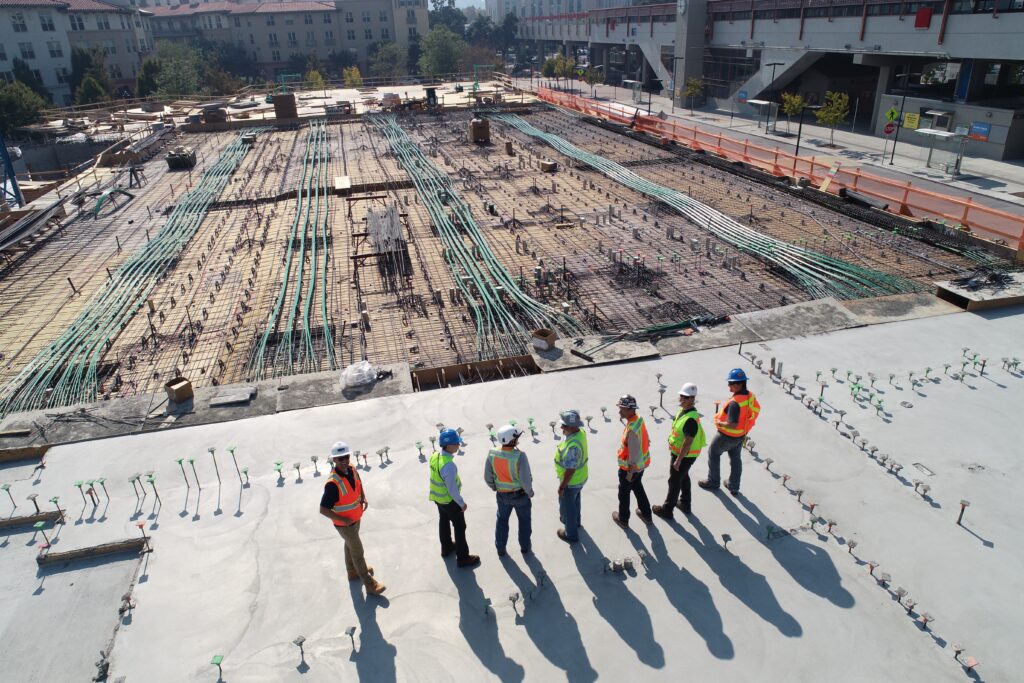Polycarbonate, a versatile thermoplastic, has become increasingly popular in the building and construction industry due to its exceptional properties and numerous advantages. From enhancing structural strength to offering transparency and energy efficiency, polycarbonate is revolutionizing the way we design and construct buildings. Let’s delve into why polycarbonate is a preferred choice in modern architecture.
Polycarbonate, a versatile thermoplastic, has become increasingly popular in the building and construction industry due to its exceptional properties and numerous advantages. From enhancing structural strength to offering transparency and energy efficiency, polycarbonate is revolutionizing the way we design and construct buildings. Let’s delve into why polycarbonate is a preferred choice in modern architecture.

Strength and Durability of Polycarbonate
One of the primary reasons for using polycarbonate in building and construction is its remarkable strength and durability. Unlike traditional building materials like glass or acrylic, polycarbonate is virtually unbreakable, making it resistant to impact and vandalism. Its high impact resistance makes it suitable for applications where safety is paramount, such as protective barriers and security glazing.
Transparency and Light Transmission
Polycarbonate boasts exceptional transparency, allowing natural light to penetrate through without compromising on structural integrity. This property makes it ideal for creating light-filled spaces, such as skylights, atriums, and large windows, enhancing the aesthetic appeal of buildings while reducing the need for artificial lighting.
Thermal Insulation Properties
In addition to its optical clarity, polycarbonate offers superior thermal insulation properties, helping to regulate indoor temperatures and reduce energy consumption. Buildings constructed with polycarbonate panels experience less heat loss in winter and heat gain in summer, leading to improved comfort for occupants and lower HVAC costs.
Flexibility and Versatility
Polycarbonate sheets are highly flexible and can be easily molded into various shapes and forms, providing architects and designers with unparalleled design freedom. Whether curved, bent, or molded, polycarbonate can adapt to diverse architectural styles and design requirements, offering endless possibilities for creative expression.
Resistance to Impact and Weathering
Another compelling reason to use polycarbonate in building and construction is its exceptional resistance to impact and weathering. From hailstorms to hurricanes, polycarbonate panels can withstand extreme weather conditions, making them suitable for outdoor applications such as roofing, cladding, and facades.
Applications in Building and Construction
Polycarbonate finds widespread applications in building and construction, including:
- Roofing: Polycarbonate roofing panels offer excellent UV protection, impact resistance, and weatherability, making them ideal for residential, commercial, and industrial buildings.
- Skylights and Atriums: Polycarbonate skylights and atriums provide natural daylighting solutions while enhancing interior aesthetics and creating inviting spaces.
- Greenhouses: Polycarbonate greenhouse panels offer superior light transmission, thermal insulation, and durability, promoting optimal plant growth and productivity.
- Windows and Doors: Polycarbonate windows and doors combine strength, clarity, and energy efficiency, offering secure and visually appealing openings for buildings.
- Safety Glazing: Polycarbonate safety glazing is used in areas requiring impact-resistant barriers, such as sports facilities, schools, and public buildings. SABIC is a specialist in polycarbonate safety glazing, offering solutions such as their lightweight coated LEXAN™ MARGARD™ sheet. This innovative glazing solution provides superior impact resistance and optical clarity, making it ideal for applications where safety is paramount. Whether used in residential, commercial, or industrial settings, polycarbonate panels provide durability, energy efficiency, and design flexibility, making them a preferred choice for architects and builders seeking innovative building solutions.
Environmental Sustainability
In an era of growing environmental awareness, polycarbonate stands out for its sustainability credentials. It is fully recyclable and can be reused or repurposed at the end of its life cycle, contributing to a circular economy and reducing waste. Additionally, the energy-efficient properties of polycarbonate help minimize the carbon footprint of buildings over their lifetime.
Cost-effectiveness of Polycarbonate
Despite its premium quality and advanced features, polycarbonate remains a cost-effective building material compared to alternatives like glass or metal. Its lightweight nature reduces transportation and installation costs, while its longevity and low maintenance requirements translate to long-term savings for building owners.
Maintenance and Longevity
Polycarbonate requires minimal maintenance to preserve its appearance and performance over time. Routine cleaning with mild soap and water is usually sufficient to remove dirt and debris, ensuring that polycarbonate surfaces remain clear and transparent for years to come. With proper care, polycarbonate panels can last decades without losing their structural integrity or aesthetic appeal.
Innovations and Advancements
The field of polycarbonate technology is continually evolving, with ongoing research and development leading to innovations such as Multiwall polycarbonate sheets, self-cleaning coatings, and enhanced thermal performance. These advancements further enhance the usability and sustainability of polycarbonate in building and construction applications. Multiwall polycarbonate sheets, in particular, offer improved insulation properties and structural strength, making them well-suited for applications requiring enhanced energy efficiency and durability.
